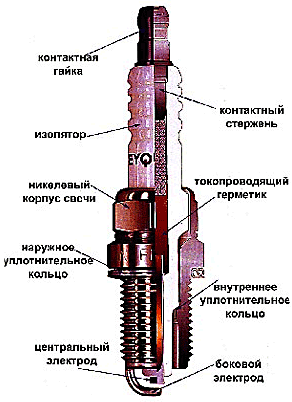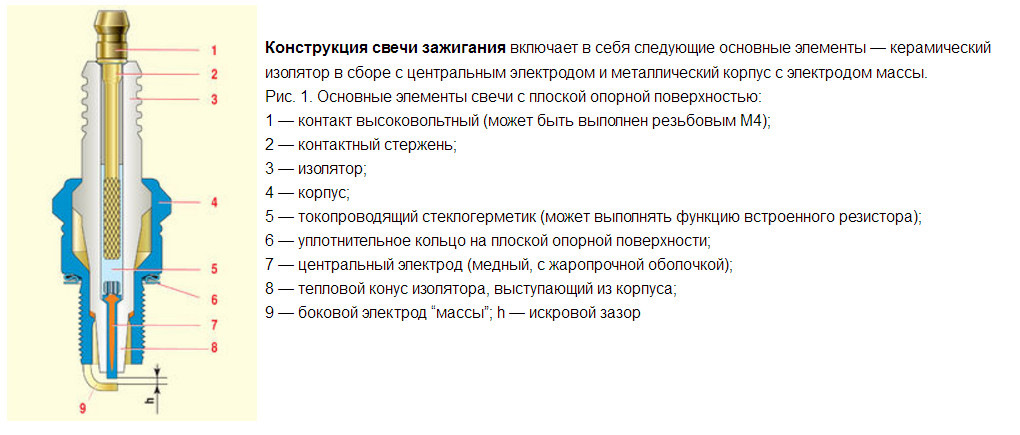
Spark plug device in a car
Content
Overtightening or undertightening spark plugs can result in engine instability or vehicle immobility. If you tighten them loosely, this will lead to the fact that the elements will not hold tight and the compression in the combustion chamber will decrease, and if you do it too hard, you can cut or deform the fragile parts of the car.
It is important to know the spark plug device in order to understand the principle of the car engine. In modern vehicles, candles of different types are used, but they have a similar algorithm of operation.
Appointment of a spark plug in a car
By analogy with wax, the car also burns, but not constantly. Her “fire” is short-term, but if you remove it from the general working chain, then the car will not move. The spark plug can ignite the mixture of air and fuel. This happens at the end of the cycle due to the voltage that appears between the electrodes. Without it, the engine will not be able to start, and the car will not go.
What is the device
Spark plugs are distinguished by the number of electrodes, but there is a basic set of elements that is characteristic of all types.
Essential elements
The car spark plug consists of the following elements:
- The contact rod through which the element is connected to the wires. As a rule, it is put on the output, or attached with a nut;
- Insulator - made of aluminum oxide ceramic material, withstands temperatures up to 1.000 degrees and voltage up to 60.000 V;
- Sealant - prevents the appearance of gas from the combustion chamber;
- Resistor - glass mass, which suits the passage of current, is located in the gap between the electrode and the rod;
- Washer - ensures the absence of gaps between the parts in the section;
- Thread;
- Electrode - connected to the rod through a resistor;
- Body - arranges the wrapping of the candle and its fixation in the thread;
- Side electrode - made of nickel, welded to the body of the part.
Overtightening or undertightening spark plugs can result in engine instability or vehicle immobility. If you tighten them loosely, this will lead to the fact that the elements will not hold tight and the compression in the combustion chamber will decrease, and if you do it too hard, you can cut or deform the fragile parts of the car.

What is the device of a spark plug
Principle of operation and characteristics
The spark plug works according to a simple algorithm: an electric discharge under a voltage of more than a thousand volts ignites a mixture of gasoline and air. The discharge occurs at a certain time of each cycle of the vehicle's power plant. To do this, low battery voltage goes into high (up to 45 V) in the coil, after which it goes to the electrodes, between which there is a distance. The positive charge from the coil goes to the electrode located in the center, and the negative one goes to the rest.
There are several types of spark plugs, depending on the number of electrodes:
- Two-electrode - the most common, have a side and a central electrode;
- Multi-electrode - have one central and two or more side electrodes, the spark goes to the one with the least resistance compared to the rest.
Multi-electrode spark plugs are more reliable, since the voltage is distributed between several ground electrodes, which reduces the load and extends the life of all vehicle components that can be damaged during replacement.

